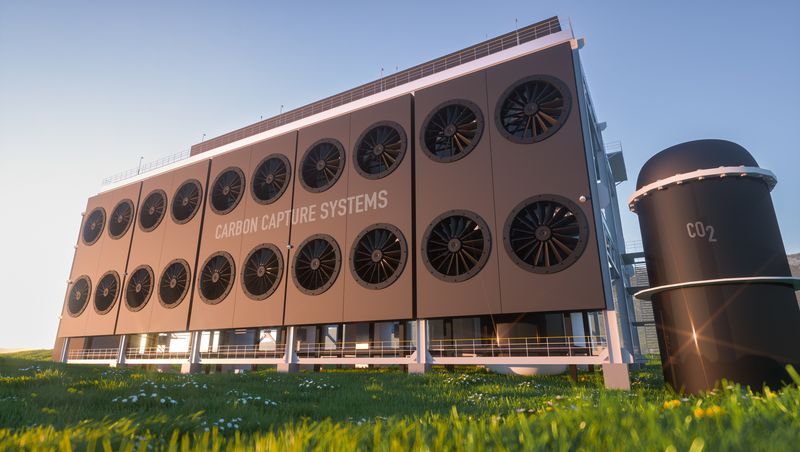Risks and uncertainties
Carbon capture and storage projects are the ultimate public-private partnership deals. Projects are bespoke and therefore a well-defined risk allocation between the public and private sectors is vital. The concept has been around since 1972 in one form or another. Quick expansion? No, it will take time.

PFI hosted its Financing Carbon Capture webinar last week following the project financings of the Northern Endurance Partnership and HyNet carbon capture and storage schemes earlier this year. Global CCS Institute CEO Jarad Daniels set the scene at the event by stating that CO2 has been used for enhanced oil recovery in the US since 1972 and the country has 8,000km of CO2 pipelines. The first climate change mitigation CCS project was in Norway in 1996. But for the sector to reach a gigaton scale, he said: "It'll have to be deployed by the private sector on fair commercial terms in many jurisdictions around the world." Thus far there have just been two deals.
The market would take off if there was a global carbon price and if that price was high enough. But that is some way off. There are regional initiatives such as the European Emissions Trading Scheme and the UK ETS. These have helped, while not fully driving new CCS deals, but over time they could do – for instance when UK ETS is applied to the waste-to-energy sector in 2028.
Without a global carbon market governments need to set the scene. In turn, the private sector needs to take plenty of risk and, of course, provide the finance. One key point from the webinar was the complex interplay between the two sectors – at a time when government budgets are nearly spent and the private sector cannot afford the huge development costs of these utility-style return schemes.
"Risk of leakage clearly sits with the private sector backed by insurance, which in turn is backed by the government ... and public liability and monitoring responsibility stays in the private sector, but ultimately it does transfer back to the state after at least 20 years of monitoring post closure." said Linklaters partner, Mark Russell, on the UK model.
Similarly, CO2 volume and revenue risk is ultimately covered by the UK government's £22bn package. Linklaters partner, Maryam Adamji said the payments the "transport storage networks receive are directly from the emitter projects, but those ... projects are then subsidised indirectly by taxpayers and consumers. So the payments that the (government's) Low Carbon Contracts Company are making to emitters through the CFD-like contracts are ultimately borne by electricity consumers through bills and through the taxpayers".
Under this mechanism the ultimate cost to the taxpayer is expected to be well below £22bn but the £22bn is needed upfront.
The commercial regulatory framework is complex and overlying that is the technical risk framework. Oil and gas majors have plenty of experience in reservoirs but that is for extraction not storage. Sproule ERCE CCO, Paul Chernik, commented "a lot of people confuse two topics: risk and uncertainty" – risk being the probability that something bad will happen and uncertainty being the outcome of a risk event.
"The first question is will the impact be on your contractual obligations? Is there an issue that could happen with regards to injection rates, field up time, total storage volumes? And what happens if a risk happens early in a project versus later in a project life? What does that do to your cashflows, what does that do to your project payout? There are questions about what the financial penalties are if you don't meet your contractual obligations because CCS sites are service providers, and who pays for the system to get back into the performance? Is it the customer, the emitters who are sending it? Is it the site itself? Do they just have to eat it? Is it governments and the national population? Because ultimately they're the producers of the CO2."
Chernik concluded that project proponents need a clear presentation of risks and uncertainties!
These are complex projects but at the same time there is a good deal of experience in dealing with the elements of the sector – pipelines, reservoirs, etc. Given the enthusiasm generated by the NEP and HyNet deal, the sector is moving forward. Societe Generale global head of energy transition, Allan Baker, said "the question is how do we build on that to globalise the financing of CCS as we have done in offshore wind and other sectors."
"I think when we look at different jurisdictions we're involved in, speaking to governments, speaking to developers – the one observation we would make at the moment is that in many cases, the regulatory regime is lagging behind. What we're seeing in Europe, the building blocks, if you like, for creating the industry, are not yet there.
"So between, for example, Japan, Malaysia and Indonesia, you've got to establish the frameworks for developing CCS. And then on top of that, you've got to have the government-to-government agreements on the transferability of CCS across borders and all the commercial arrangements for how you manage that.
"I'd hope that process would be much quicker than the 10 years it took in the UK to go through that process. I don't think the business models are necessarily transferable just by picking them up and putting it down somewhere else. Each jurisdiction is, is very different. The requirements are different. As I mentioned, the risks are the same." And the uncertainties.





